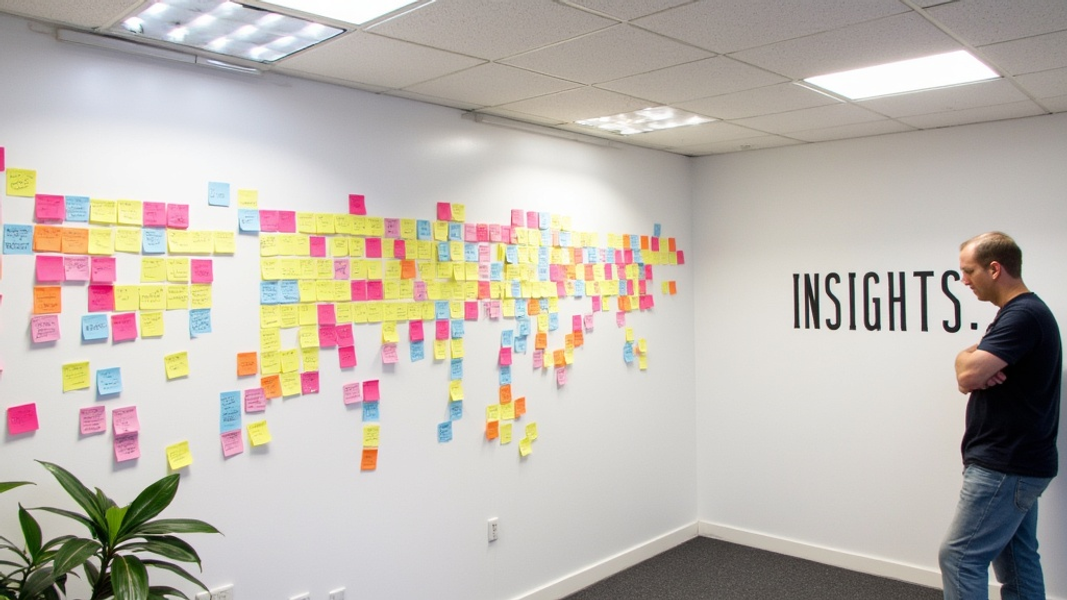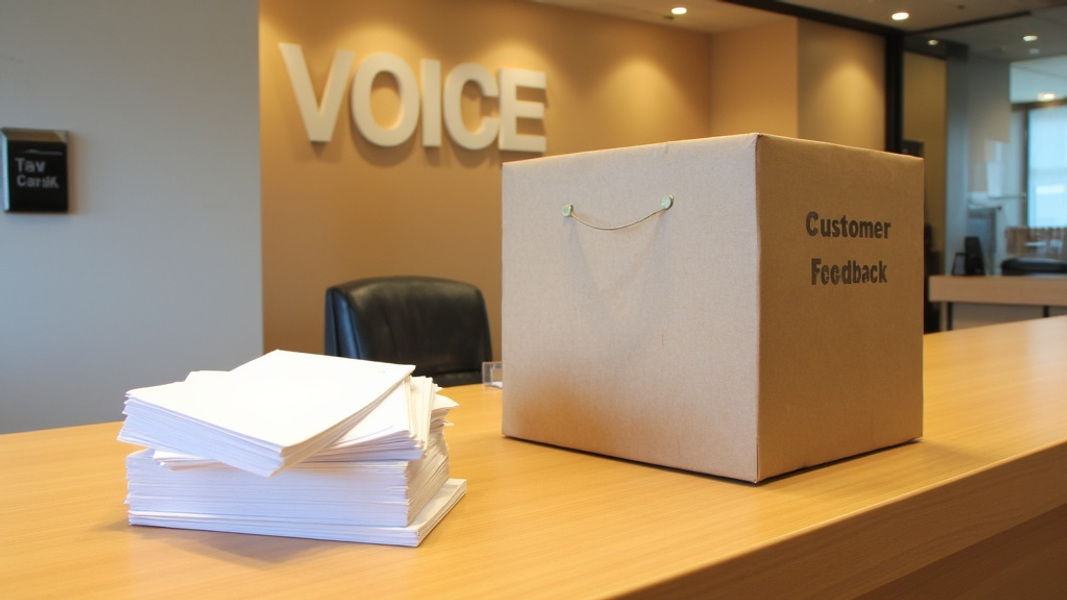
Have you ever wished you could read your customers' minds? While we can't offer telepathy, we can give you the next best thing: a comprehensive guide to gathering and using customer feedback. This tutorial will walk you through the process of collecting, analyzing, and acting on customer insights to improve your business.
Understanding Customer Feedback
Customer feedback is the information customers provide about their experiences with your product or service. It's a goldmine of insights that can help you improve your offerings and grow your business.
Why Customer Feedback Matters
Customer feedback drives product improvements and business growth. When you listen to your customers, you can identify pain points, uncover new opportunities, and make changes that truly matter to your audience. This leads to better products, happier customers, and ultimately, a more successful business.
Feedback also strengthens customer relationships. When customers see that you value their opinions and act on their suggestions, they feel heard and appreciated. This builds trust and loyalty, turning casual users into brand advocates.
Types of Customer Feedback
Customer feedback comes in two main flavors: explicit and implicit.
Explicit feedback is directly provided by customers. This includes survey responses, product reviews, and comments on social media. It's clear and straightforward, giving you direct insights into customer thoughts and feelings.
Implicit feedback, on the other hand, is behavioral data that you can observe. This includes things like how often customers use your product, which features they use most, and where they tend to drop off in the user journey. While less direct, this type of feedback can be just as valuable in understanding customer needs and preferences.
Another way to categorize feedback is qualitative versus quantitative. Qualitative feedback includes open-ended responses and comments, giving you rich, detailed insights. Quantitative feedback involves numerical data and ratings, which are easier to analyze at scale but may lack depth.
Setting Up Your Feedback Strategy
Before you start collecting feedback, it's crucial to have a clear strategy in place. This will ensure that you're gathering the right information from the right people, and that you know what to do with it once you have it.
Defining Goals and Metrics
Start by aligning your feedback collection with your business objectives. Are you looking to improve a specific product feature? Reduce customer churn? Increase user engagement? Your goals will shape the type of feedback you seek and how you use it.
Once you've set your goals, choose relevant Key Performance Indicators (KPIs) to measure success. These might include Net Promoter Score (NPS), Customer Satisfaction Score (CSAT), or specific metrics related to product usage or customer retention.
Identifying Target Audience Segments
Not all customers are created equal when it comes to feedback. Prioritize high-value customer groups - these might be your most frequent users, your biggest spenders, or customers who've been with you the longest.
Consider feedback from different user personas as well. A new user might have very different insights than a long-time customer. By gathering feedback from various segments, you'll get a more complete picture of your customer base.
Selecting Appropriate Feedback Channels
Match your feedback channels to your customers' preferences and your goals. If your audience is young and tech-savvy, in-app surveys might work well. For B2B clients, email surveys or phone interviews might be more appropriate.
Don't put all your eggs in one basket. Combine multiple methods for comprehensive insights. This might include surveys, interviews, social media monitoring, and analytics data.
7 Effective Methods to Collect Customer Feedback
Now that you've laid the groundwork, let's dive into specific methods for collecting customer feedback.
1. Surveys and Questionnaires
Surveys are a tried-and-true method for gathering customer feedback. They're versatile, scalable, and can provide both quantitative and qualitative data.
When designing surveys, keep them short and focused. Ask one question at a time and avoid leading questions. Use a mix of question types, including multiple choice, rating scales, and open-ended questions.
Tools like SurveyMonkey, Typeform, and Google Forms make it easy to create and distribute surveys.
2. In-App Feedback
For digital products, in-app feedback is a powerful tool. It allows you to gather insights in real-time, while the user experience is fresh in your customers' minds.
Implement feedback widgets or prompts at key points in the user journey. For example, you might ask for feedback after a user completes a task or uses a new feature.

Slack uses in-app feedback effectively for feature requests. They have a dedicated "/feedback" command that allows users to submit ideas or report issues without leaving the app.
3. Customer Interviews
One-on-one interviews provide deep, qualitative insights that you can't get from surveys alone. They allow you to ask follow-up questions and explore topics in depth.
When conducting interviews, prepare a list of open-ended questions, but be flexible enough to follow interesting threads as they come up. Listen more than you talk, and don't be afraid of silence - often, customers will fill the gap with valuable insights.
4. Social Media Listening
Your customers are talking about you on social media - are you listening? Social media monitoring can provide unfiltered feedback and help you spot trends or issues before they become major problems.
Tools like Hootsuite, Sprout Social, and Mention can help you track brand mentions and sentiment across various platforms.
5. Website Analytics
Your website analytics can provide valuable implicit feedback about how customers interact with your digital presence.
Track user behavior and engagement metrics like time on page, bounce rate, and conversion rates. Tools like Google Analytics provide this data for free.
Heatmaps and session recordings can give you even more detailed insights. They show you exactly how users navigate your site, where they click, and where they get stuck.
6. Customer Support Interactions
Your customer support team is on the front lines, dealing with customer issues and questions every day. They're a goldmine of customer feedback.
Train your support team to gather feedback during their interactions. This might involve asking specific questions or simply being attuned to common issues or requests.
Implement post-interaction surveys to gauge customer satisfaction with their support experience. This can help you improve your support processes and identify recurring product issues.
7. User Testing Sessions
User testing involves watching real users interact with your product or service in a controlled setting. It's particularly useful for identifying usability issues and understanding how customers use your product in practice.
Conduct usability tests for new features or products before launching them widely. This can help you catch and fix issues early.
Tools like UserTesting, TestingTime, and Lookback can help you recruit participants and conduct remote user testing sessions.
Analyzing and Acting on Feedback
Collecting feedback is only half the battle. To make it truly valuable, you need to analyze it effectively and take action based on your findings.
Organizing and Categorizing Data
Start by creating a centralized repository for all your feedback data. This might be a spreadsheet, a database, or a dedicated feedback management tool.
Tag and categorize your feedback to make it easier to analyze. Common categories might include product features, user experience, pricing, or customer service.
Identifying Patterns and Trends
Look for patterns in your feedback data. Are there common complaints or requests? Are certain issues more prevalent among specific user segments?
Use data visualization tools to help spot trends. A simple word cloud can highlight frequently mentioned terms, while charts and graphs can show changes over time or differences between user groups.

Hold regular feedback review sessions with your team. This ensures that insights are shared across departments and that everyone is aligned on priorities.
Closing the Feedback Loop
Don't leave your customers hanging. When you make changes based on feedback, let your customers know. This shows that you value their input and encourages future participation.
Measure the impact of changes you implement based on feedback. Did the change solve the problem? Did it improve relevant metrics? This helps you refine your feedback-to-action process over time.
Overcoming Common Challenges
Implementing a customer feedback system isn't always smooth sailing. Here are some common challenges you might face and how to overcome them.
Dealing with Negative Feedback
Negative feedback can be hard to hear, but it's often the most valuable. Instead of getting defensive, view criticism as an opportunity for improvement.
Respond to negative feedback promptly and professionally. Thank the customer for their input, apologize for any issues, and explain how you plan to address their concerns.
Look for ways to turn detractors into promoters. By addressing their issues effectively, you can often turn a negative experience into a positive one.
Encouraging Ongoing Participation
Getting customers to provide feedback once is relatively easy. Getting them to do it consistently is more challenging.
Consider offering incentives for feedback submission. This could be as simple as entering participants into a prize draw, or offering a small discount on their next purchase.
Build a culture of continuous improvement within your organization. When customers see that their feedback leads to real changes, they're more likely to keep participating.
FAQs
How often should I collect customer feedback?
There's no one-size-fits-all answer, but aim for a continuous feedback loop rather than sporadic efforts. Regular check-ins (e.g., quarterly surveys) combined with ongoing channels (like in-app feedback) often work well.
What if I get conflicting feedback from different customers?
This is common, especially when dealing with diverse user groups. Look for patterns within specific segments, and consider the context of each piece of feedback. Sometimes, offering customization options can help satisfy different user preferences.
How can I encourage customers to give more detailed feedback?
Open-ended questions often elicit more detailed responses. You can also follow up on initial feedback with more specific questions. For surveys, consider using a mix of quantitative and qualitative questions.
Customer feedback is a powerful tool for business growth and improvement. By implementing a systematic approach to collecting, analyzing, and acting on feedback, you can create better products, improve customer satisfaction, and drive your business forward. Remember, the goal isn't just to listen to your customers, but to truly hear them and take meaningful action based on their insights.
